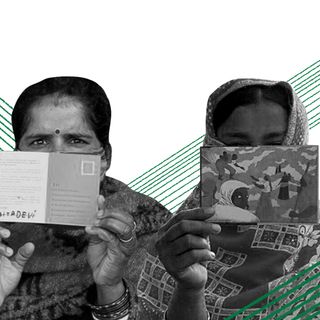Any one of 10 highly infectious diseases could cause the next worldwide pandemic, and global pharmaceutical companies are not prepared for any of them, a new report warns. Of these 10, one of the most likely is the Nipah virus.
“Nipah virus is another emerging infectious disease that causes great concern,” Jayasree K. Iyer, executive director of the organization that authored the current report, Netherlands’ Access to Medicine Foundation, tells The Guardian. “Nipah could blow any moment.” It has a fatality rate between 40% and 75%, according to the World Health Organization. The infection can cause severe respiratory illnesses and brain swelling.
Other pandemic candidates include MERS and SARS infections caused by other coronaviruses; Rift Valley fever, which is common in sub-Saharan Africa; and the Crimean-Congo hemorrhagic fever, among others. Of the 16 most-infectious diseases identified by the World Health Organization, products, including vaccines, medicines, and diagnostic tools, are in some stage of research and development (R&D) for only six, including Ebola and Chikungunya. Pharmaceutical giants have no R&D projects in the pipeline for 10 of the 16, which “could be the next ones to cause death rates to spike and to stall the global economy. They matter more than ever in today’s inter-connected world that presents viruses with heightened opportunities to spread at the speed of a jet plane, increasing the risk of future pandemics,” the report states.
The foundation is sounding the warning now, following the belated response to Covid19 by pharma bigwigs. “Despite years of warnings that novel coronaviruses were among the pathogens most likely to cause a global health emergency, the pharmaceutical industry, as well as society at large, was ill-prepared for the Covid19 pandemic,” the report states, adding pharma giants only moved to develop Covid19 drugs when it became clear the pandemic was going to affect rich as well as poor countries. In most cases, academic and small biotech organizations are left anticipating and trying to prepare for the next dangerous outbreak, without the support of big pharma giants with the ability to scale up both R&D and production.
Related on The Swaddle:
UN Biodiversity Chief Calls For Ban on Wildlife Markets. But Is it Feasible?
The report adds, “Without a sustained commitment by large pharmaceutical companies to pandemic preparedness, the world will remain worryingly vulnerable to pandemics and epidemics, particularly those that mainly affect low-income countries.”
Iyer adds, “The next pandemic could be a drug-resistant infection,” the rates of which are particularly increasing in low- and middle-income countries. “In terms of antimicrobial resistance (AMR), we have antibiotics that still work, but time is running out to develop replacements,” Iyer says. Here, access to cutting-edge medicines is the need of the hour, but only a handful of pharma giants are working to address the public health needs of poorer countries. Of 20 companies the foundation monitors, only Novartis, GSK, Pfizer, Merck, Sanofi, and Johnson & Johnson had initiatives to ensure their medicines reached low- and middle-income countries.
But, “a lot more still needs to be done,” the report adds. “Solving the access to medicine problem is fundamentally a question of taking action at scale: industry needs to reach more people with more products across a wider range of the world’s poorest countries.” And with the next pandemic around the corner, pharma companies need to rethink their access planning strategies and ensure people residing in poor countries have equitable access to medicines that will in the future determine the fate of millions, if not billions, of people.




